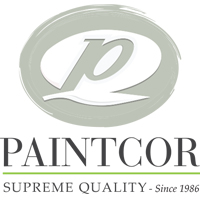PaintCor: Paint Techniques To Give Your Space Flair
Paint is a simple yet effective way to spruce up any space. Before painting anything, whether it be the floor, ceiling, walls or furniture, you need to be sure the surface has been properly prepped and primed for its paint job. Here we share some useful paint techniques to make painting pain-free and simple.
Depending on the surface you are painting, you need to consider the use of a superior plaster to ensure the paint job is a success. When painting plaster you need to choose a product made to prime plaster, and for wood, a wood primer.
If in doubt you could make use of paint manufacturer’s innovations like Epoxiprime, which has been developed to stick to surfaces which most other paints won’t, including:
- Damp cementitious surfaces
- Glass
- Tiles
- Fibreglass
If you apply this as your first layer your paint will take well to the surface it is being painted on. So even your bathroom tiles can get a makeover with the right priming products and techniques.
ragging
Ragging
This paint technique gives surfaces a finished look resembling that of crushed velvet and it is easy and affordable to achieve. After the surface has been primed and painted with a glazed paint, use a crumpled dry rag (replace it when it becomes saturated) to dab the wet paint to create the luxurious finish.
You can also use the rag rolling technique by using a rolled up rag for a more directional pattern and finish.
Stippling
A stippled effect on painted surfaces adds dimension and movement in the colour you choose. You could even use two colours juxtaposed together for a truly unique effect of two colours coming together in places to reflect a third (mixed) colour. Use a stippling brush with paint or glaze to create a dynamic finish on any surface.
Sponging
This painting technique is similar to ragging. You will first paint your base the desired colour, and then use a sponge to dab on the second colour. Alternatively, you could apply your desired colour and/or glaze, and while it is still drying use the sponge to remove some of the layers for a textured effect.
Sponging
Make it Last
Once you’ve done all the hard work you’ll want to make sure it lasts as long as possible. Even if you’ve used a decorative installation like masonry or a wall mural, treating it with Glaze-Coat can protect it from UV rays and give a glossy finish that will not yellow over time.
Visit Paintcor’s product range to see what professional products are available to work best for the project you have in mind.
1 Comment
Leave a comment/Ask a question
You might also like...
-
Eclectic wine cabinet in bold steel and oak By The Wine Room

This unique cooled wine cabinet was designed, manufactured and installed by The Wine Room in their client’s living area; and provides a multifunctional cellaring space ...
-
World’s Best Chef lists Krone for his Gucci Osteria

Often heralded as the master of Italian gastronomy, Massimo Bottura is the restaurateur and chef behind multiple Michelin-starred restaurants across the globe, including the Gucci ...
-
ITE Products: DURALiTe D50 is Here This Summer

Summer is very definitely upon us, and for much of South Africa, that means we can expect the majority of our annual rainfall over the ...
-
Interno Marche: A New Hotel Chronicling 60 Years of Italian Design

Interno Marche: A New Hotel Chronicling 60 Years of Italian Design to Open in the Charming Town of Tolentino From Michele De Lucchi to Gae ...





























Elouise Mackenzie
September 25, 2020I just love this dark blue wall! Did you use 2 different colours of blue or did mixing with the glaze cause enough of an effect to create the rich velvet look?